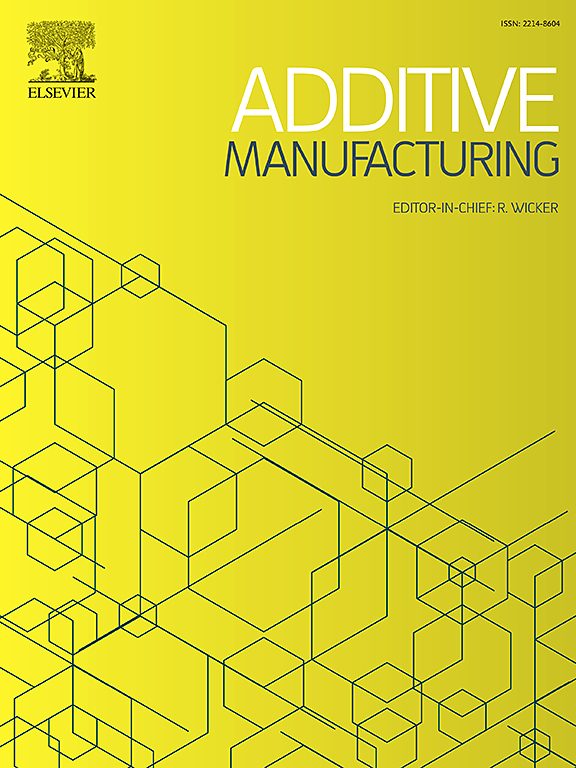基于光聚合的陶瓷增材制造中提高形状保真度的闪烁光固化策略
IF 10.3
1区 工程技术
Q1 ENGINEERING, MANUFACTURING
引用次数: 0
摘要
本文章由计算机程序翻译,如有差异,请以英文原文为准。
Flashing light curing strategy for shape fidelity improvement in photopolymerization-based ceramic additive manufacturing
We proposed a flashing mechanism as an alternative to continuous illumination to counter scattering-induced overcuring in photopolymerization-based ceramic additive manufacturing (AM). Unlike the conventional continuous illumination method, the flashing technique exposes the ceramic slurry to multiple flashes of ultraviolet (UV) light in stages. The duration of the flash determines the radical formation in the UV-exposed region and their degree of diffusion in the unexposed area due to scattering. Off-times between consecutive flashes ensure the complete radical utilization, reaction termination, and the formation of a prepolymerized layer with reduced scattering efficiency. The study investigates the effects of flash duration and off-time on slurry curability and overcuring for zirconia (ZrO2), titania (TiO2), and alumina (Al2O3), at various solid loadings and compared with continuous illumination. Furthermore, the degree of conversion (DoC) was calculated and compared for both illumination methods. Lattice structures printed using both methods were subjected to debinding and sintering for densification, followed by an evaluation of their material properties. The results demonstrate that the flashing effectively controls scattering-induced overcuring with shorter flash durations and longer off-times, enhancing the printing accuracy. Although, flashing irradiation led to slightly low monomer conversion, which affected the interlayer strength in green bodies, the final sintered structures exhibited comparable density and mechanical properties to those printed continuously. These findings suggest that the flashing technique is a viable alternative to continuous AM to achieve high-shape fidelity by mitigating scattering effects in photopolymerization-based ceramic AM without compromising material properties.
求助全文
通过发布文献求助,成功后即可免费获取论文全文。
去求助
来源期刊

Additive manufacturing
Materials Science-General Materials Science
CiteScore
19.80
自引率
12.70%
发文量
648
审稿时长
35 days
期刊介绍:
Additive Manufacturing stands as a peer-reviewed journal dedicated to delivering high-quality research papers and reviews in the field of additive manufacturing, serving both academia and industry leaders. The journal's objective is to recognize the innovative essence of additive manufacturing and its diverse applications, providing a comprehensive overview of current developments and future prospects.
The transformative potential of additive manufacturing technologies in product design and manufacturing is poised to disrupt traditional approaches. In response to this paradigm shift, a distinctive and comprehensive publication outlet was essential. Additive Manufacturing fulfills this need, offering a platform for engineers, materials scientists, and practitioners across academia and various industries to document and share innovations in these evolving technologies.
 求助内容:
求助内容: 应助结果提醒方式:
应助结果提醒方式:


